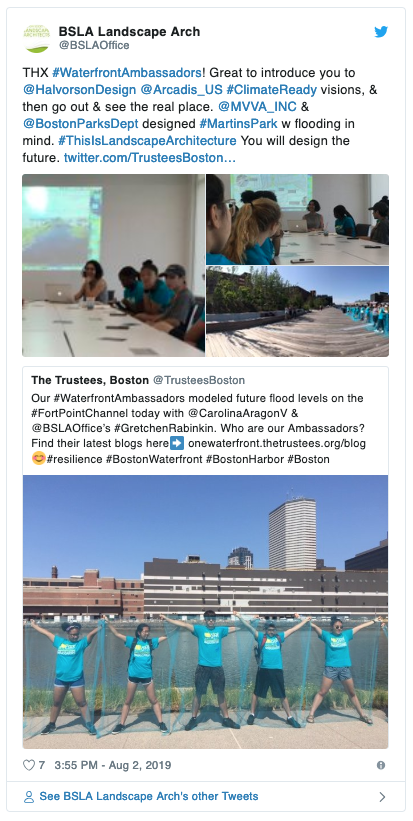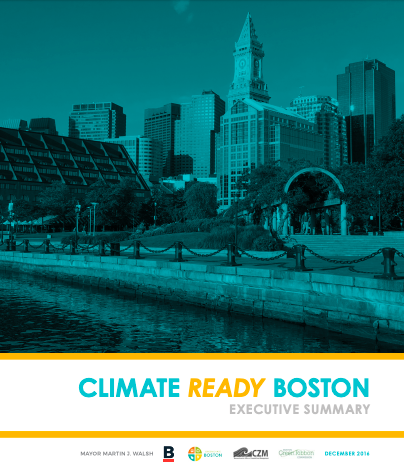Visualizing rising seas with temporary art installations along Boston's vulnerable waterfront | One Waterfront Ambassadors weekly wrap-up
This was another dynamic week for the Waterfront Ambassadors, kicking off with an opportunity to meet with artist Carolina Aragón and Boston Society of Landscape Architects (BSLA) Executive Director Gretchen Rabinkin for an interactive experience along the waterfront. The team learned about the inspiration behind an art installation on the East Boston Greenway—designed by Aragón and organized by the BSLA—that brought awareness to some of the issues being faced in the City by our vulnerable waterfront.
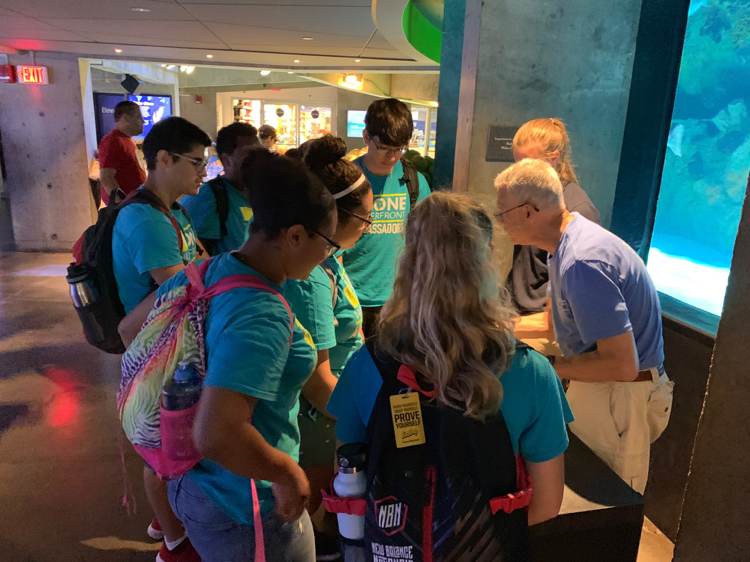

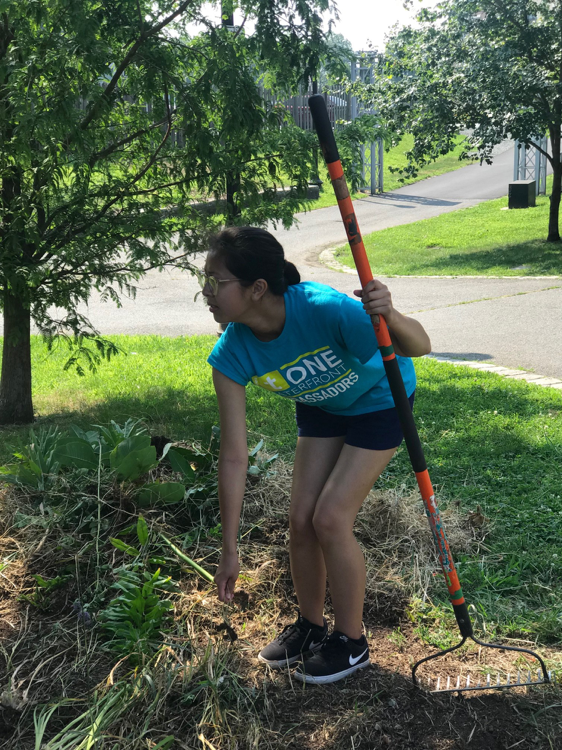
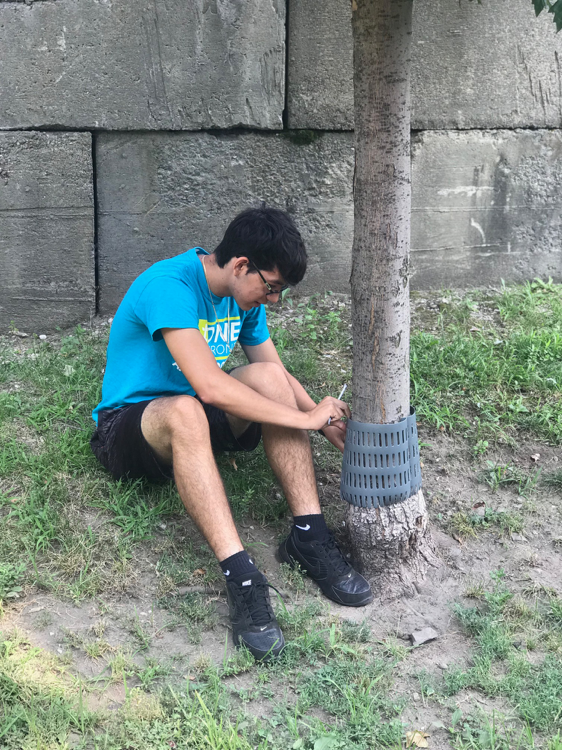
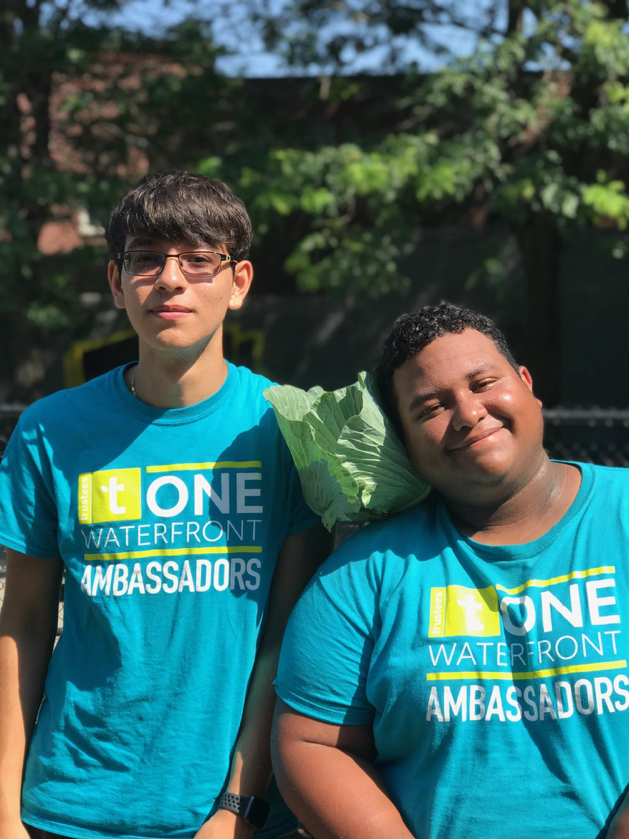
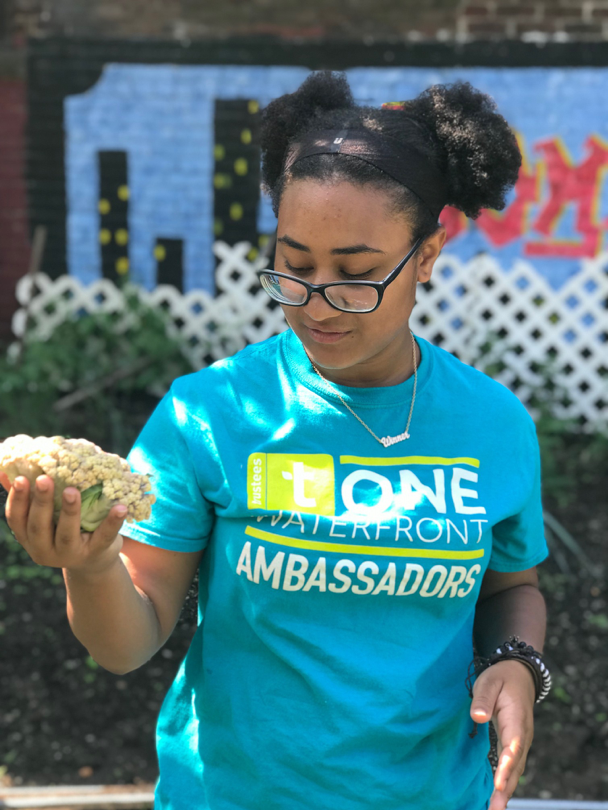
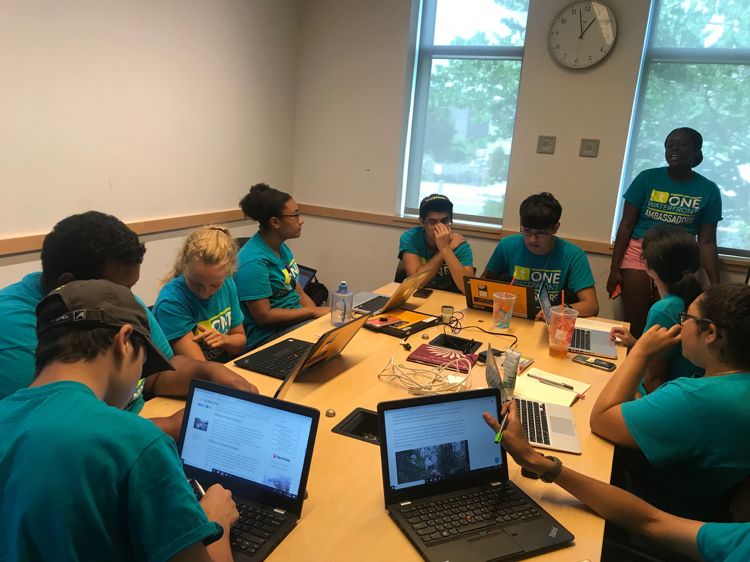
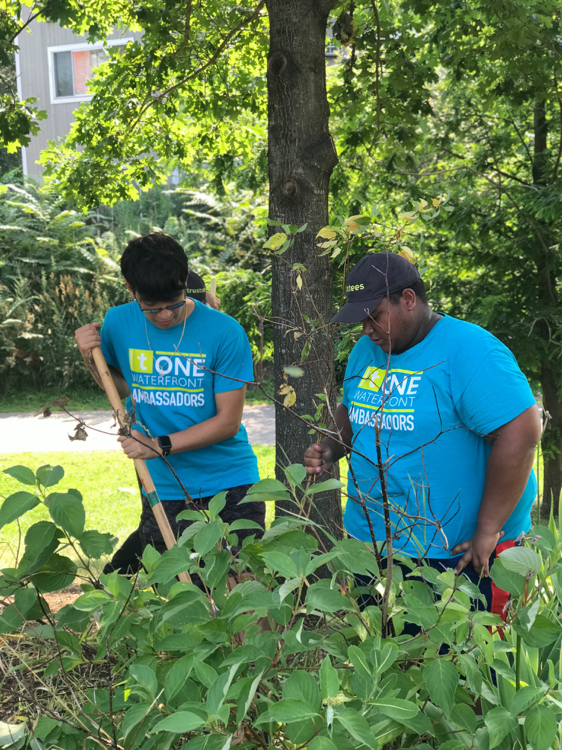
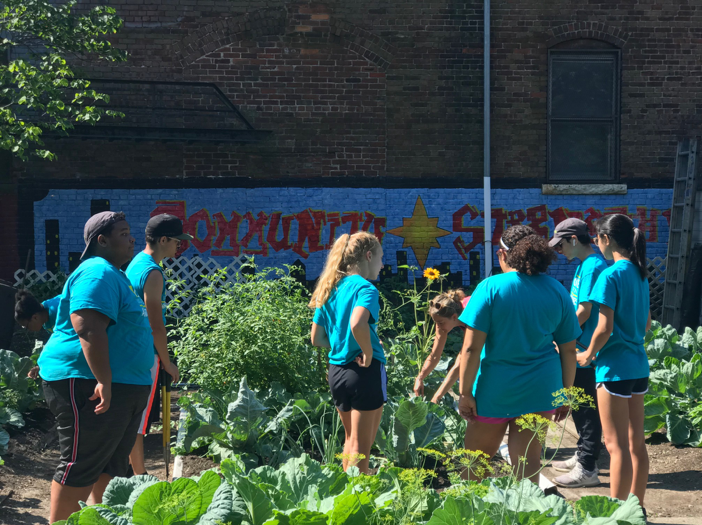
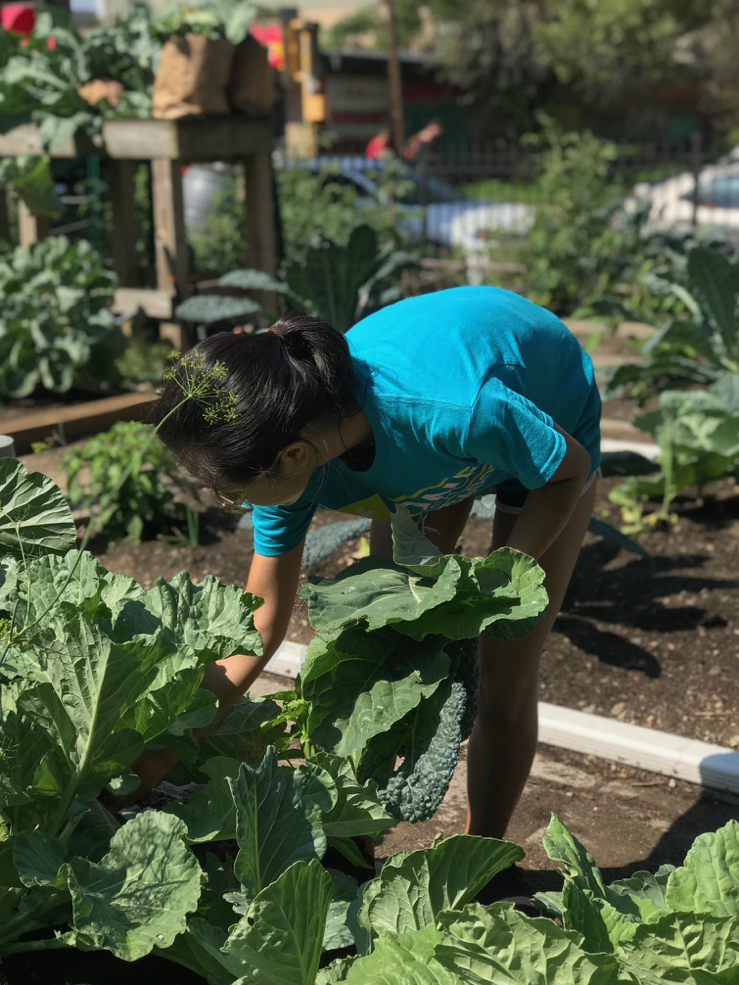
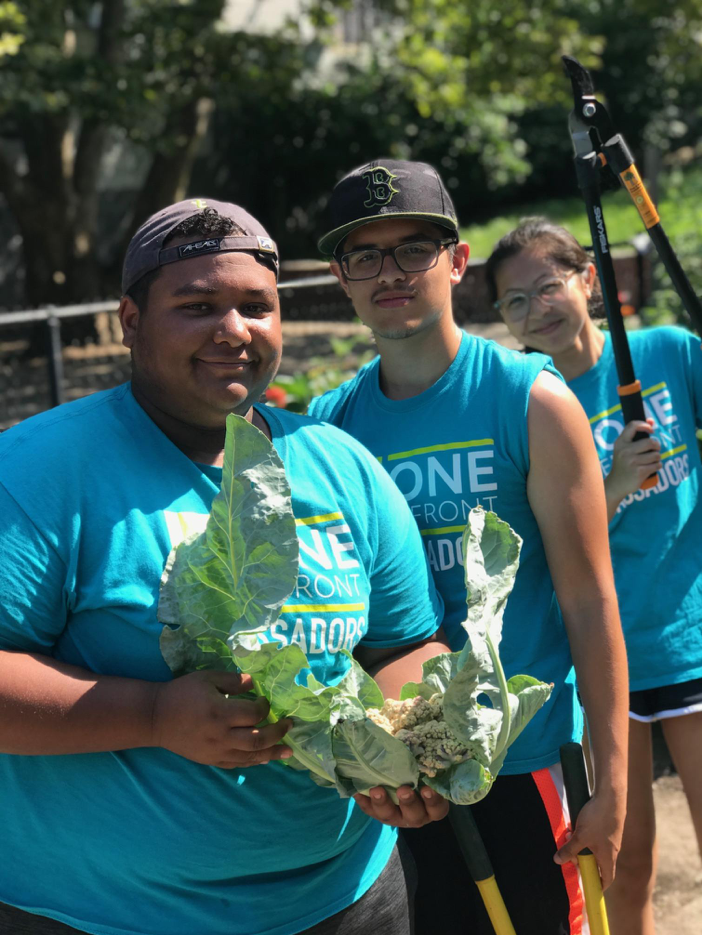
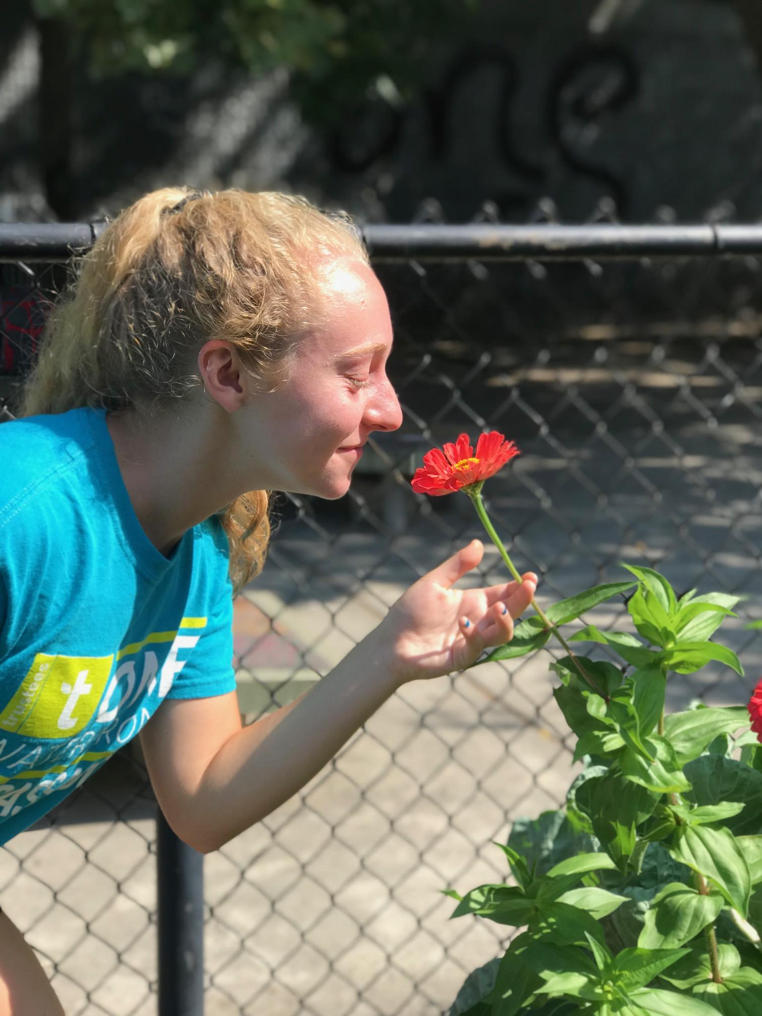
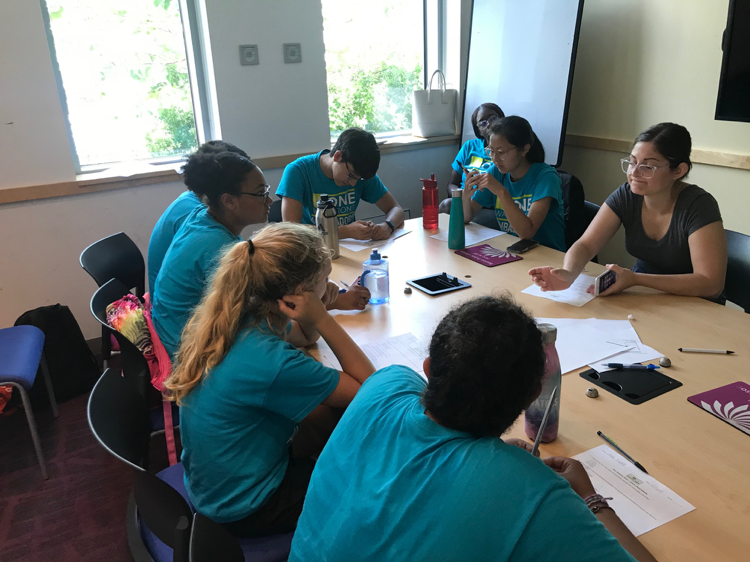
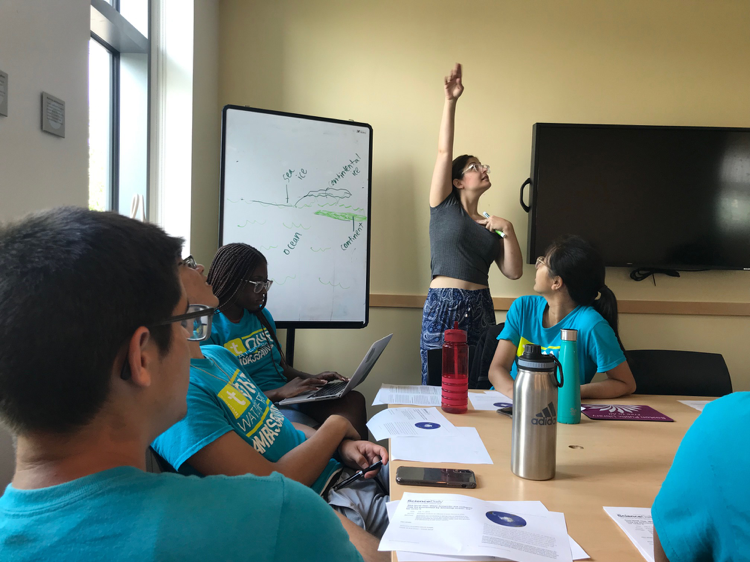
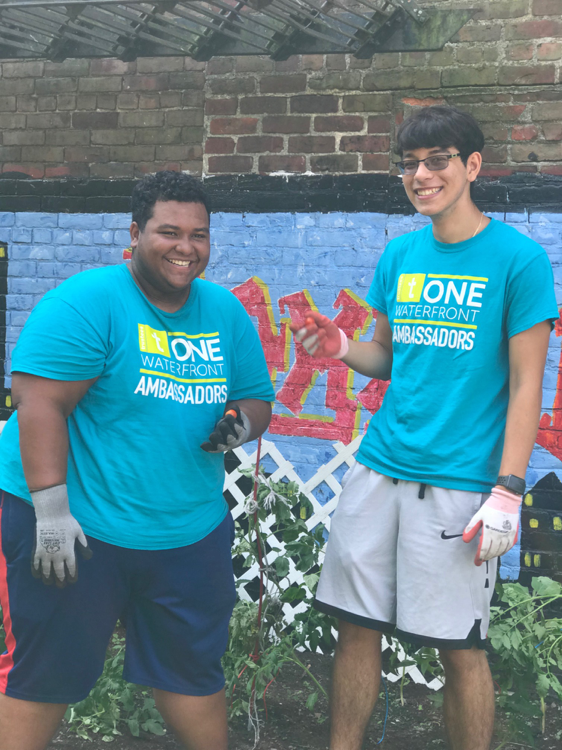
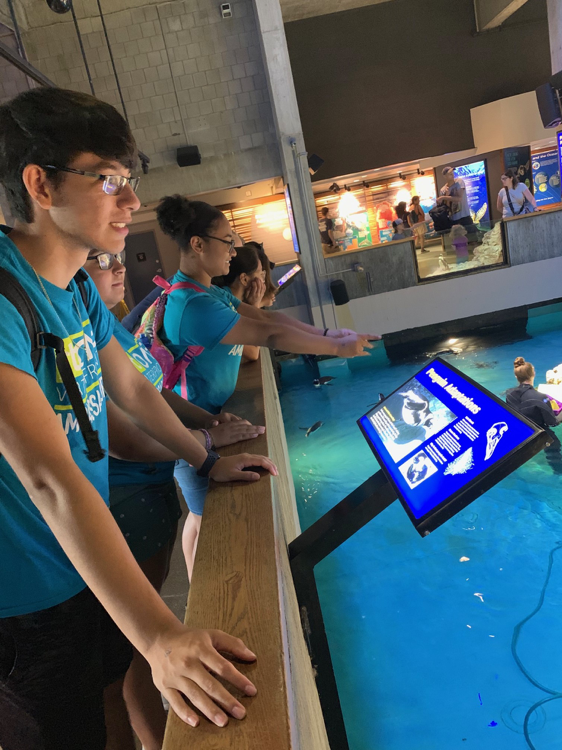
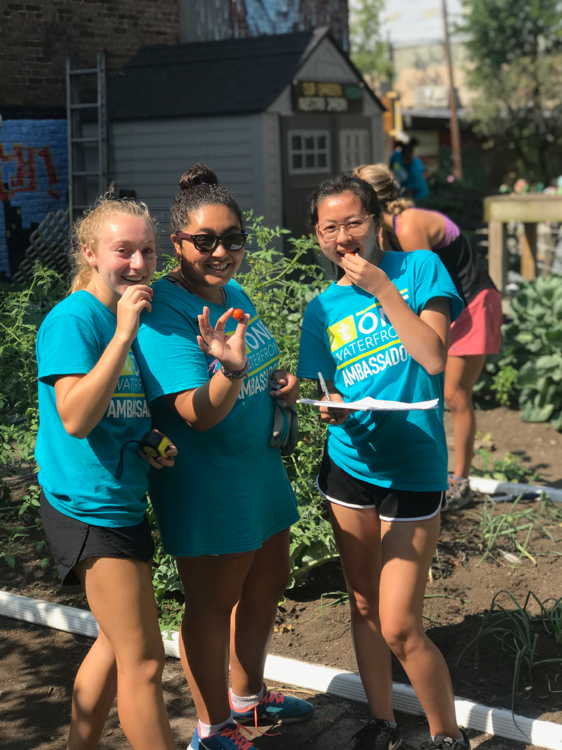
Aragón, also an assistant professor of landscape architecture at the University of Massachusetts Amherst, uses public art to educate and engage the public on issues that connect to landscapes. She spoke to the Ambassadors about some of the art installations she has worked on in Boston, most notably her installation FutureWATERS | AGUASfuturas, on the East Boston Greenway which was used to bring attention to rising sea levels.
"As an artist, I use my artwork to help me and my audiences better connect to the places in which we live, to better understand their history, and to better appreciate their landscapes,” explained Aragón in describing her vision. “The installation FutureWATERS is a way to help me better understand and process a future landscape affected by climate change. My goal is to bring accessible understanding to this difficult subject in a way that is engaging and playful rather than threatening. I strive to create moments of beauty and wonder that serve as a point of entry to the abstract and challenging subject of climate change. My hope is not only to make the message accessible, but to present it in such a way that it can stay longer in people’s minds, hopefully inciting action.”
Afterwards, the group walked to Martin’s Park, a new waterfront park designed with accessibility and resilience in mind, where they had an opportunity to create their own temporary installation with Rabinkin and Aragón. Each Ambassador took a sheet of blue fabric, representing the sea and held it up against themselves at the park, as well as at other points along the Fort Point Channel. The exercise provided a striking representation of what a future could look like for our waterfront city in the face of rising sea levels.
"Being able to visually see and experience how significant the flooding could be gave the Ambassadors a major shock,” said Program Manager Aubrey. “That’s a LOT of water.”
According to Climate Ready Boston, sea levels in South Boston could rise (from 2013 levels) by nine inches by the 2030s and 40 inches by the 2070s. Some of the solutions proposed to address this risk include elevated waterfront open spaces, dunes, and living shorelines. Having increased green space would help the city’s waterfront absorb more water—both from storms and rising seas. The Ambassadors have learned about these mitigation measures throughout the program, including the One Waterfront Initiative's vision to create a series of accessible, iconic parks around the waterfront that contribute to the city’s resilience goals.
As the week progressed, the Ambassadors spent time at community garden Eastie Farm—another type of green space that can help boost a community’s resilience—where the group harvested cauliflower and cabbages for a local soup kitchen.
The group also worked alongside Friends of the East Boston Greenway volunteers as they installed tree collars—a practice that protects tree trunks during lawn maintenance and other landscape care. While there one of the volunteers, Molly Niedbala, a Boston Public Schools teacher, educated the group about the importance of climate adaptation and resilience in the context of a vulnerable waterfront city. Afterwards, the group shared what they learned by giving the Edwards Middle School summer school 7th graders a tour of Eastie Farm.
Later in the week the Ambassadors made a second visit to the Department of Conservation and Recreation (DCR) in Revere, where they met with Visitor Services Supervisor Matthew Nash. In their prior visit they learned about biomimicry, or nature-based design—and how it can help improve resilience. This time, they put their learnings into practice and began a project to make their own sculptures designed to bring awareness to pollution, with a focus on the effects of pollution on wildlife living in and around our waterfront areas.
Wrapping up with “field trip Friday” the Ambassadors took a trip to the New England Aquarium, where they learned how climate change is affecting different waterfront and marine animals including penguins, seals and fish.
“Although some of the Ambassadors have been to the aquarium many times, it was sobering for them to learn about how fragile these species and their environments are in the face of climate change,” said Program Manager Aubrey. “Especially how the death of one species could heavily impact other species in that habitat and effect an entire ecosystem.”
Next Thursday (August 15), the Ambassadors will celebrate the end of their program with a poster presentation, and all are invited! To learn more, or to register, click here.
##
To learn more about the One Waterfront Ambassadors program, visit: onewaterfront.thetrustees.org/ambassadors
Click here to read previous weekly recaps from our Ambassadors!

